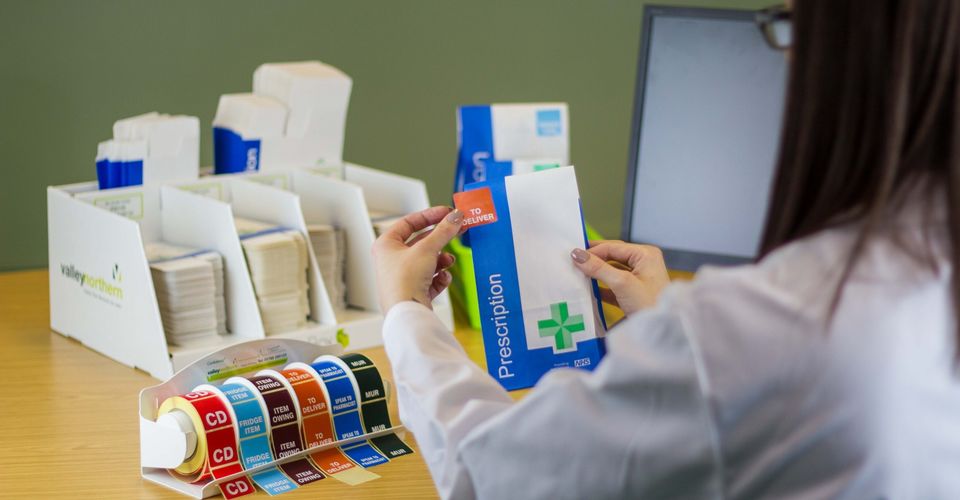Lifesaving labelling for hospital pharmacists
Posted in: Product Knowledge 11th January 2018
According to NHS National Statistics, the total number of items dispensed from Britain’s pharmacies rose from 752 million in 2006, to a colossal 1,104 million in 2016. With an ever-increasing number of prescriptions dispensed each year, we explain the importance of listening to the packaging requests of those on the front line — the pharmacists.
The NHS report states that the average number of prescription items per head of the population is 20 per year. This may seem like a modest figure, but it amounts to 2.7 million prescription medications every single day. For pharmacists, ensuring this immense number of prescriptions are dispensed accurately and correctly can be difficult and in some cases, mistakes can be fatal.
For hospital pharmacies, analgesic painkillers and blood thinning anticoagulants are among the most commonly prescribed medications — and both can be incredibly dangerous if used incorrectly or irresponsibly. A common complaint from hospital pharmacies is that prescription labels can peel from the plastic bags used for dispensing. Naturally, this is an irritating design flaw, but when dealing with sensitive medication, missing labels can cause serious problems.
The Medicines and Healthcare Products Regulatory Agency (MHRA) was formed in 2003 to develop the legal framework for labelling and packaging pharmaceutical products. However, the most recent MHRA best practice guidelines suggest an increase in self-regulation of pharmaceutical packaging, putting more pressure on pharmacists to ensure everything is correct.
Aside from the functionality and design of pharmaceutical packaging, it is imperative for prescription packaging to provide patients with the necessary information to take medicine correctly — and to ensure the medication they have is actually their prescription. Valley Northern’s team of packaging designers witnessed the problem of improper labelling first hand when visiting various hospital pharmacies.
Due to the polythene bags commonly used by hospital pharmacists, getting a label to adhere securely wasn’t as straightforward as it should be. To correct this, the Valley Northern team redesigned its own pharmacy bags to include a write-on panel for labelling. The write-on panels use a different material to the standard polythene, meaning the labels, where they still need to be used, are less likely to peel away.
Packaging gripes may seem like a petty complaint, but in an environment dispensing potentially dangerous medication, it is vital for pharmacists to ensure the dosing information is specified correctly. Some medications can be life-threatening if taken incorrectly, even if it is accidental. For example, when used incorrectly, high strength opioid painkillers can cause a slower heart rate, hinder breathing and even cause death.
Listening to the requests of pharmacists is essential to ensure that medical packaging meets the changing needs of the modern pharmacy. The number of items dispensed from Britain’s pharmacies has continued to grow year-on-year since 2006 and it is not showing any signs of slowing down. To manage this growing demand, we need to support pharmacists to ensure they can dispense medication accurately, efficiently and without fuss.
To speak to Valley Northern’s team of packaging specialists, or browse the company’s pharmacy packaging product range, visit the Valley Northern website.
